The Sound Atlas
Mapping the acoustic onto the human soul, moving meditations on the power and meaning of sound. Nature writers Michaela Vieser and Isaac Yuen set out in search of sounds beautiful and loathsome, melodious and disturbing, healing, strange, and intimate. The phenomena of sound may be fleeting and evanescent, but the memory of it can open a window into the soul, deepening our connections with time, the environment, and each other. From the edge of the solar system to the crackle of arctic sea ice, from the ancient oracle site of Dodona to the singing pillars of Hampi, each of these thirty-six essays explores stories of sound through the lens of history, science, and culture, stylishly blending fantastical facts and unique anecdotes to create a compelling narrative.
Louise Farrenc: Nonet for Winds and Strings
As well as being a virtuoso pianist, Louise Farrenc became the first woman to hold a permanent position as Professor at the Paris Conservatoire while continuing to compose symphonic and chamber music. This handbook introduces readers to Farrenc and her contemporaries with a focus on professional women musicians in nineteenth-century Paris. Farrenc's music was much admired by her contemporaries including Robert Schumann and Hector Berlioz. The acclaimed Nonet (1849) incorporated playful dialogue within the ensemble, virtuosic display, and an artful balance of newer and older compositional methods, garnering critical and artistic success and official recognition for the composer. Its performance history shows how musicians managed the logistics of professional life: forming and sustaining relationships, organizing concerts and tours, and promoting their work in the musical press. The book's nuanced analytical approach and historical insights will allow students, performers and listeners a fresh appreciation of Farrenc's work.
The Pocket Kendrick Lamar
Dive into the world of Kendrick Lamar, and celebrate the artist's rise from Compton rapper to hip-hop royalty.This book is your backstage pass to everything K-Dot - tracing Kendrick Lamar's Californian roots through his hip-hop rise, to that unforgettable 2025 Super Bowl halftime performance. Known for his sharp lyrics and deep storytelling, and with critically acclaimed albums and a powerful stage presence, Kendrick has revolutionized modern rap music. The Pocket Kendrick Lamar covers his diverse musical influences - from Tupac to jazz, and the albums that changed the game. Learn the stories behind his fire lyrics, as he tackles issues of race, identity and social justice. And (of course) get the low-down on his beef with Drake - a rap feud over authenticity, lyrical prowess and dominance in hip-hop. Perfect for die-hard fans and cultural enthusiasts alike, this book is a must-have for anyone who wants to know how Kendrick became rapper royalty. Gemini Pockets From little guides to soothe your soul to all-access passes to the lives of pop icons, and from quizzes and puzzles for literature lovers to books on food, nature, fashion and more, Gemini Pockets are the perfect fit for your life and interests.
The Mixing Engineer's Handbook 6th Edition
Teenage Kicks
Michael Bradley joined his school friend's group in Derry, Northern Ireland in the summer of 1974. They had two guitars and no singer. Four years later the Undertones recorded 'Teenage Kicks', John Peel's favourite record, and became one of the most fondly remembered UK bands of the post punk era. Sticking to their punk rock principles, they signed terrible deals, made great records and had a wonderful time. They broke up in 1983 when they realised there was no pot of gold at the end of the rock and roll rainbow. His story is a bitter-sweet, heart-warming and occasionally droll tale of unlikely success, petty feuding and playful mischief during five years of growing up in the music industry. Wiser but not much richer, Michael became a bicycle courier in Soho after the Undertones split. "Sixty miles a day, fresh air, no responsibilities," he writes. "Sometimes I think it was the best job I ever had. It wasn't, of course."
Tom Petty
Experience the extraordinary career of beloved rocker Tom Petty with this richly illustrated slipcase edition. Twenty-eight Billboard Top-10 singles, induction in the Rock and Roll Hall of Fame, and a string of best-selling studio albums...nearly a decade after his passing, Tom Petty remains one of rock's most beloved figures. In Tom Petty: The Life & Music, veteran rock journalist Gillian G. Gaar reveals this rock icon through 75 career releases, performances, and accolades. This luxuriously produced collectible edition features: A slipcased hardcover formatStunning concert and candid offstage photographyImages of memorabilia, including gig posters, vinyl record sleeves, ticket stubs, period ads, and moreThrough the decades, Gaar covers it all: Petty's childhood in Florida and early band, MudcrutchAll 13 studio albums, including those with The Heartbreakers and as a solo artist such as the breakouts Damn the Torpedoes and WildflowersA selection of his greatest singles, like the rock standards "Don't Do Me Like That" and "Free Fallin'"Relationships with notable rock figures such as Bob Dylan, George Harrison, Johnny Cash, and Stevie NicksLegendary gigs, from his first SNL appearance to his 2004 performance with Prince and the Rock and Roll Hall of Fame and his Super Bowl halftime performanceand much moreBeginning with Tom Petty and the Heartbreakers' 1976 self-titled debut LP and continuing right through the band's final release, Hypnotic Eye in 2014, Tom Petty is one of the most beloved performers and musicians in rock 'n' roll history, influencing countless acts for decades. This book is your unprecedented retrospective of Petty's life and art, from teenage Florida rock 'n' roll enthusiast to international star and celebrity.
Taylor Swift
Illustrated throughout with stunning images, this glossy, fully-illustrated biography tells the story of Taylor Swift's life and music.The definitive biography of a global music iconIncludes coverage of the Tortured Poets Department and the Eras Tour, as well as visuals from Taylor Swift's most recent 'Childless Cat Lady' photoshootTaylor Swift's rise to mega stardom is the story of the century. Charming fans straight out the gate as a teen country music sensation, Swift has gone on to dominate the music industry as a pop titan.She is the first woman to have four albums in the Billboard chart's Top Ten at the same time, is the recipient of fourteen Grammys and forty American Music Awards, and her recent Eras tour broke records to become the highest-grossing tour in history.A treasured celebrity who has triumphed in the face of haters and intrusive tabloid coverage, Taylor Swift uses her personal life as inspiration for her songwriting, delivering hit after hit, and selling out stadiums the world over. Her music continues to engage, evolve and encapsulate the hearts of fans all over the world.Taylor's story is one of love and poetry.
Queens of Disco
A joyful, vibrant look at the evolution of disco music - told through the stories of ten female pioneers.From leading vocalists such as Gloria Gaynor, Donna Summer and The Pointer Sisters, who helped popularize disco music in the late seventies, to modern-day disco divas including Madonna and Kylie Minogue, Queens of Disco is an electrifying must-read for dance music enthusiasts.This joyful book explores disco's emergence in the underground club scene and unpicks its influence on DJ culture and legacy in defining electronic dance music such as hip-hop, house and new-wave. Featuring complementary playlists alongside detailed profiles of ten female trailblazers and fully illustrated throughout.Queens of... seriesPacked with iconic images, cultural history and playlists, The Queens of... series is a celebration of influential music genres and the female pioneers that defined them.
Willie Nelson
Journey through Willie Nelson's rebellious, prolific, and enduring career with this richly illustrated tour of the beloved singer-songwriter's 100-plus albums. Few musicians or celebrities are as widely adored as Willie Nelson. The legendary Texas singer-songwriter is still recording and performing music well into his nineties. In this photo-filled coffee-table gift book, noted country/roots/Americana music writer Geoffrey Himes traces Nelson's entire career through the lens of his albums, examining: Nelson's influences and early career as a songwriterThe circumstances of each album's writing and recordingStudio musicians and personnelHow each album fit into Nelson's career arc and the evolution of his craftIn addition, Himes offers a sidebar for each album that includes: An image of the album sleeveRecording and release datesSingle releasesChart positions for singles and albumsAlong the way, read about Nelson's film roles, notable collaborators, famous Fourth of July picnics, iconic Martin guitar "Trigger," and involvement in causes like Farm Aid, biodiesel fuels, and marijuana legalization. The text, together with more than 250 images of Nelson on- and offstage, make for a unique and visually entertaining celebration of an American treasure who has transcended America's increasing polarization to become a national treasure.
The Pocket Sabrina Carpenter
The inside scoop on Sabrina Carpenter's music, life and career.From her breakout role on Girl Meets World to her rise as a chart-topping singer, Sabrina Carpenter has transformed from Disney star to pop sensation, earning her place as one of today's most iconic voices in music. This unofficial and unauthorized pocketbook is a must-have for fans of the pop princess, packed with facts about her albums, tours, upbringing and relationships. Celebrating Sabrina's journey from child star to Grammy-winning artist, is offers a closer look at the milestones, moments and magic that define her career. Gemini Pockets From little guides to soothe your soul to all-access passes to the lives of pop icons, and from quizzes and puzzles for literature lovers to books on food, nature, fashion and more, Gemini Pockets are the perfect fit for your life and interests.
Eagles - Their Greatest Hits
(Easy Piano Personality). Take It to the Piano Do you consider yourself an avid Eagles fan? Are you new to the piano and eager to play music you love? You're in the right place! Eagles Their Greatest Hits includes ten Eagles classics all arranged in for easy piano. This folio provides simple yet satisfying arrangements, ideal for players with a couple years of experience and beyond. Take It Easy Hal Leonard's Easy Piano folios are the perfect starting point for developing pianists to build skills while playing the songs they actually want to play. This series helps bridge the gap between learning and playing enjoyable music. Each piece includes lyrics, and is arranged in a simplistic manner while maintaining the essence of the original song. Whether you're performing for an audience or building confidence at the keyboard, you'll like you're part of the band! Peaceful Easy Arrangements Spread your wings and soar on your musical journey with these Eagles hits: Already Gone * Best of My Love * Desperado * Lyin' Eyes * One of These Nights * Peaceful Easy Feeling * Take It Easy * Take It to the Limit * Tequila Sunrise * Witchy Woman.
Musicality for Modern Humans
Musicality for Modern Humans propels music appreciation into the 21st century. It's a self-enrichment book about the inner game of sound-based art for curious people who wish they could get deeper into music, including those who feel confused, overwhelmed, or intimidated. It's for anyone looking to shake up their habits, get free of algorithms, and listen for more in music across all genres and time periods. Musicality is about how composers and musicians manipulate tone, time, and timbre to reach us emotionally, intellectually, and spiritually. It's also about how we respond and how alert we are to creativity and nuance. With perspective earned through 25 years of reporting and a lifetime of playing, Nashville-based writer and broadcaster Craig Havighurst resets our expectations, simplifies music theory, champions today's finest artists, and guides readers in a rethink of their musical diet.Humbly honoring the educational lineage of Leonard Bernstein, Wynton Marsalis, and Billy Taylor, Havighurst is a new voice filling the void in an age when the importance of musical literacy has been increasingly diminished in schools and the mainstream press. He guides us toward active, engaged listening with the goal of enhancing our well-being, our capacity for empathy, and our bonds to family and community. Readers of every level and background are invited to heed the words of Isaac Stern and make music "an active part of natural life" through discerning listening and a lifelong exploration of what moves us.
Musicality for Modern Humans
Musicality for Modern Humans propels music appreciation into the 21st century. It's a self-enrichment book about the inner game of sound-based art for curious people who wish they could get deeper into music, including those who feel confused, overwhelmed, or intimidated. It's for anyone looking to shake up their habits, get free of algorithms, and listen for more in music across all genres and time periods. Musicality is about how composers and musicians manipulate tone, time, and timbre to reach us emotionally, intellectually, and spiritually. It's also about how we respond and how alert we are to creativity and nuance. With perspective earned through 25 years of reporting and a lifetime of playing, Nashville-based writer and broadcaster Craig Havighurst resets our expectations, simplifies music theory, champions today's finest artists, and guides readers in a rethink of their musical diet.Humbly honoring the educational lineage of Leonard Bernstein, Wynton Marsalis, and Billy Taylor, Havighurst is a new voice filling the void in an age when the importance of musical literacy has been increasingly diminished in schools and the mainstream press. He guides us toward active, engaged listening with the goal of enhancing our well-being, our capacity for empathy, and our bonds to family and community. Readers of every level and background are invited to heed the words of Isaac Stern and make music "an active part of natural life" through discerning listening and a lifelong exploration of what moves us.
Symphonic Adiemus
(BH Secular Choral). Symphonic Adiemus presents twelve numbers from the Adiemus series in dynamic new scorings for SATB choir and full symphony orchestra. Since it was first heard in 1994, Adiemus has captured the imagination of music lovers worldwide thanks to its unique combination of classical principles with the flavors of world and ethnic music. Symphonic Adiemus includes numbers from the first three albums Songs of Sanctuary, Cantata Mundi and Dances of Time. Recorded on Decca 5793828 by the London Philharmonic Choir and the Adiemus Symphony Orchestra of Europe.
George Harrison
'A magisterial biography... Thomson's book adds something new to this conversation...' - Chicago TribuneBehind The Locked Door is Graeme Thomson's rich, insightful account of George Harrison's extraordinary life and career.As a Beatle, Harrison underwent a bewilderingly compressed early adulthood, buffeted by unprecedented levels of fame and success. After Beatlemania left him unsettled and unfulfilled his became a quest for deeper meaning which travelled far beyond the parameters of his former band and indeed music itself.This elegant, in-depth biography tracks him assiduously through his many changes and conflicts, from schoolboy guitarist to global superstar, God seeker to independent film-maker, Formula One enthusiast to UNICEF Fundraiser, and marks the perennial struggle of a man attempting to walk a spiritual path lined with temptation.Drawing on scores of new interviews with close friends and collaborators, rigorous research and critical insight, George Harrison: Behind The Locked Door is the ultimate account of the motives and varied achievements of an often misunderstood man. It is also an intimate character study, beautifully illustrating the eternal yin and tang of Harrison's nature; the definitive account of a compelling, contradictory life.
Poetics of Music in the Form of Six Lessons
Timeless lessons on the pleasures of listening, the dilemmas of composition, and the meaning of artistic freedom from a founder of musical modernism. In October 1939, Igor Stravinsky took the stage at Harvard not as a conductor but as a speaker. Invited to deliver the prestigious Norton Lectures, he had departed Europe just days after the outbreak of war, leaving behind not only a growing political maelstrom but also his life in France, where his wife, eldest daughter, and mother all had died in the previous year. Poetics of Music offers a snapshot of this pivotal moment in the composer's biography and career. Delivered at the height of his neoclassical period, which blended the sculptural precision of classicism with distinctively twentieth-century cadences, Stravinsky's lectures explore both the creative potential and the constraints of tradition. Though he achieved artistic immortality as a genre-defying experimentalist who scandalized audiences in Belle ?poque Paris, the Stravinsky we find here is more circumspect, defending the dignity of formal conventions against the more anarchic currents of modernist experimentation. Tradition, he argues, is not a relic of a bygone past but a living force that animates the present. And true artistic freedom emerges not only in moments of revolutionary inspiration but also through strict deference to the formal requirements of the work. Like his compositions, Stravinsky's lectures are ambitious and at times bombastic, punctuated by wit and polemic. Ranging widely from the phenomenology of rhythm to the fate of high culture in the Soviet Union, he invites us to reflect on what it is in music that compels us, whether we are hearing one of his polytonal works or a simple birdsong.
Pop Rounds for Choir Book/Online Audio
(Choral Collection). Singing rounds has always been an easy way to introduce harmony to young singers. Now they can enjoy rounds based on the hit pop songs by John Legend, Anna Kendrick, Camila Cabello, Justin Timberlake and more! Each Performance Kit comes with 8 books and a code to access Full performance and Accompaniment recordings. Audio is accessed online using the unique code inside the kit and can be streamed or downloaded. The audio files include PLAYBACK+, a multi-functional audio player that allows you to slow down audio without changing pitch, set loop points, change keys, and pan left or right.
Hal Leonard the Beatles Ukulele Starter Pack
(Hal Leonard Kits). Totally unique, with iconic graphics from 1965 to 1970, the Beatles nylon strung ukuleles make an ideal beginner's instrument, or are perfect for avid fans and collectors. Featuring a wood body for excellent sound projection and tone, smooth adjustable machineheads for accurate tuning and strap button, this bright and colorful ukulele puts the fun back into learning to play the uke. Packaged in a full color display box. The Beatles Ukulele Chord Songbook contains complete lyrics and chord symbols above the lyrics for dozens of great songs. Each song also includes chord grids at the top of every page and the first notes of the melody for easy reference. Perfect for people who don't read music but want to strum chords and sing, and are equally ideal for more advanced, music-reading ukulele players who don't feel like wading through note-for-note notation. This collection features 100 favorites from the Fab Four: Across the Universe * Back in the U.S.S.R. * Carry That Weight * Dear Prudence * Eight Days a Week * Good Day Sunshine * Here Comes the Sun * If I Fell * Love Me Do * Michelle * Ob-La-Di, Ob-La-Da * Revolution * Something * Ticket to Ride * We Can Work It Out * and many more.
The Dybbuk
(BH Stage Works). Libretto by Alex Tamkin. Reproduced from the composer's autograph manuscript in the Tamkin Archive .
Peter Grimes, Op. 33
(BH Stage Works). Vocal Score by Erwin Stein Corrected Edition, 2003
A Charm of Lullabies, Op. 41
(Boosey & Hawkes Voice). Existing edition of A Charm of Lullabies (BH 5000052) extended by an appendix containing two settings originally intended for the cycle but discarded by the composer: A Sweet Lullaby (Nicholas Breton) and Somnus, the Humble God (John Denham). These two songs were first performed at the 2018 BBC Proms by Sarah Connolly (mezzo-soprano) and Joseph Middleton (piano), and the first recording, by the same performers, is available on Chandos (CHAN10944). The publication includes lyrics with German and French reference translations, plus introduction by Eric Crozier, performance notes by Nancy Evans, and editorial note on the additional songs by Colin Matthews.
English Folk Tunes for Piano
(Piano Collection). A selection of 32 traditional English songs arranged for piano. Styles include dances, ballads and jigs. Historical and other notes are included. The CD includes full demos of each piece. Includes: Barbara Allen * Early One Morning * Come You Not from Newcastle? * and more.
Scottish Folk Songs
(Vocal). A collection of 30 traditional tunes arranged for 1 or 2 voices and piano. Put together by the highly regarded singer and arranger Philip Lawson, the volume contains well-known songs such as Auld Lang Syne and Loch Lomond, as well as many lesser known pieces. The volume is accompanied by a CD with a recording of all tunes performed by Philip and Sophie Lawson. German and French translations of all texts are available as pdf downloads from the Schott Music website. Suitable for singers of grades 3-8.
Irish Folk Tunes for Viola
(String). Violist and composer Benedict Taylor presents a collection of 60 pieces for solo viola. Drawn from the rich tradition of Irish folk music, the collection covers a range of styles including jigs, reels, hornpipes and marches. The volume includes notes on playing styles, and is accompanied by audio with a recording of all tunes. Songs include: The Wandering Minstrel * Donnybrook Fair * The Home Brew * The Skylark * The Kilfenora Lass * Boru's March * Coleman's Cross * McFiveny's Hornpipe * John Doherty's * The Old Green Hills * and more. The accompanying audio is accessed through Hal Leonard's popular MyLibrary system using the provided code. The audio can be streamed or downloaded and includes PLAYBACK+, a multi-functional audio player that allows you to slow down audio without changing pitch, set loop points, change keys, and pan left or right.
Argentinian Tango and Folk Tunes for Flute
(Woodwind). Argentinian Folk Tunes for Flute presents a collection of beautiful pieces arranged for solo flute with chords for accompanying instruments, drawn from the rich tradition of Argentinian music. Highly regarded performer author and teacher Ros Stephen provides notes on all of the pieces, explaining their background and history. The volume is accompanied by a CD with a recording of all tunes.
American Old Time Fiddle Tunes 98 Traditional Pieces for Violin Book/Audio Online
(String). Collection of popular American fiddle music grouped by key, including: Turkey in the Straw, Shortenin' Bread, Cotton Eyed Joe, and more. With notes on tuning, bowing, and regional playing styles. Intermediate to Advanced Level.
Scottish Folk Tunes 69 Traditional Pieces for Cello Book/Online Audio
(String). Intermediate to advanced arrangements. The tunes include slow airs and laments, marches, strathspeys, reels, jigs, polkas, hornpipes, and a quickstep. Includes extensive notes on the selections. The audio features Kevin McCrae's "Bonnie" recorded by the composer and all other tunes performed by Neil Johnstone. Audio is accessed online.
Telfer: Irish Folk Tunes for Accordion - 30 Traditional Pieces Book with Online Material
(Schott). Irish Folk Tunes Accordion is a collection of 30 arrangements of traditional tunes including a range of styles such as Reels, Hornpipes, Jigs and more. Accordionist Gemma Telfer provides notes on all of the tunes, as well as general notes on interpretation. The volume is also accompanied by a recording of all tunes performed by Gemma. German and French translations of all texts are available as pdf downloads from the Schott Music website. Suitable for players of grades 3-8.
Lawson: English Folk Songs: 30 Traditional Pieces for 1-2 Voice and Piano Book with Online Material
(Vocal Collection). English Folk Songs is a collection of 30 arrangements for 1 or 2 voices and piano, of traditional tunes. Put together by the highly regarded singer and arranger Philip Lawson, the volume contains well known songs such as Ash Grove and Scarborough Fair, as well as many lesser known pieces. Audio recordings of all tunes performed by Philip and Sophie Lawson are available for free download. German and French translations of all texts are available as pdf downloads from the Schott Music website. Suitable for singers of grades 3-8.
Stephen: Russian Fiddle Tunes: 31 Traditional Pieces for Violin (with Optional Violin Accompanying Parts)
(String). The author of Argentinian Tango and Folk Tunes for Violin (ED 13379), Ros Stephen, presents a wide-ranging collection of Russian Tunes for violin. Highly flexible to use, the pieces may be performed by a solo violinist as violin duets. The music has been carefully edited to create authentic arrangements. Ornamentation, bowing and fingering have been included to enable stylistic performances, and there is also guidance on general style, as well as note on all of the individual tunes. Recordings of all tunes, performed by Ros Stephen, are available for free download.
A Choral Sequence from the St John Passion
(Boosey & Hawkes Sacred Choral). This 17-minute choral sequence is scored for mixed chorus and organ, with optional percussion, and presents five of the Latin motets which occur at the end of movements in MacMillan's St John Passion (2007): Astiterunt reges terr, Judas, mercator pessimus, Peccantem me quotidie, Crucifixus etiam pro nobis, Stabat Mater. In the last of these, MacMillan quotes Bach's Passion Chorale; Bach's original is therefore included as an optional opening movement in the sequence, to be sung in German or English. The sequence was selected by Nigel Perrin (Bath Camerata), who comments, "I chose these movements because they stand on their own and are effective as 'motets' with organ accompaniment. The order of movements forms a sort of chronological sequence. Although the keys do not relate I felt that this did not matter as each movement is completely different, creating its own sound-world and emotion. I have not added to the original settings; rather, I have removed material so that the choral construction can stand alone." A Choral Sequence from the St John Passion represents a significant addition to the repertory of devotional works for Passiontide and is appropriate for church and concert performance alike.
Eastern European Folk Tunes for Accordion
(Piano). A lively and wide-ranging collection of great tunes from all around Eastern Europe. Includes traditional dances and tunes from Hungary, Romania, Bosnia and Herzegovina, Macedonia, Albania, Serbia, and the Klezmer tradition, along with a new composition by Merima Kljuco. Includes: Korjate - Vulpiuta - Bulbul pjeva - Tintaroiul de Laslovat - Jo Hanino tu Hina - Evo ovu rumen ruzu - Goro golema - Ajsino Oro - Valle e Rexhes - Ljiljano mome - Ajde Jano - Der Gasn Nigun - Imate li vino - Sinoc ja i maja kona - Alena - Zvedzdi - Moj dilbere - more!
Fraser: Scottish Fiddle Tunes - 60 Traditional Pieces for Violin Book with Online Material
(String). This book contains 60 Scottish tunes for solo violin, including slow airs, strathspeys, reels and jigs. The tunes are ideal for concert performances or informal sessions and will be enjoyed by players of intermediate to advanced standard. The introductory section provides an explanation of traditional playing styles, ornamentation and bowing techniques, and all the tunes are performed Iain Fraser. The audio files can be downloaded with a voucher code (printed in the book).
Adiemus Colores
(BH Large Choral). Adiemus Colores marks Karl Jenkins' return after ten years to the series that helped make his name, and it draws inspiration from the sights, sounds, colors and rhythms of Latin American music. As with the original Adiemus, Jenkins combines classical principles with the flavors of world and ethnic music supported by lively percussion. His choral writing adopts an invented language with no meaning, like scat singing in jazz. Each movement is named in Spanish after a color and explores the mood each evokes for the composer, embracing Brazilian samba, Argentinian tango and Spanish bolero. Adiemus Colores is scored for choir and ensemble with soloists, with a total duration of 75 minutes. Performance materials are available on hire.
Vocalises in the Modern Style [Vocalizzi Nello Stile Moderno]
(Vocal). A collection of 16 vocalises by various composers including Alfano, Casella, Malipiero, Pizzeti, Respighi and more.
100 Solos
(Music Sales America). Graded solos for players of all standards. The pieces are complete in themselves and require no accompaniment. Includes: Basin Street Blues * Hawaii Five-O * Jailhouse Rock * James Bond Theme * Sing * When I'm Sixty-Four * Yellow Submarine * and more.
The Holy Spirit Mass for Satb and Organ or Strings and Piano
(BH Large Choral). Here is a new work for choir, string ensemble and piano, commissioned in 2017 for the National Lutheran Choir to mark the 500th anniversary of the Reformation. Gramophone Magazine states "Arnesen outdoes even Messrs Chilcott and Rutter for sheer Singability". Hear this beautiful work on the Decca Classics recording featuring Swedish conductor Sofi Jeannin and the Trondheim Vocal Ensemble.





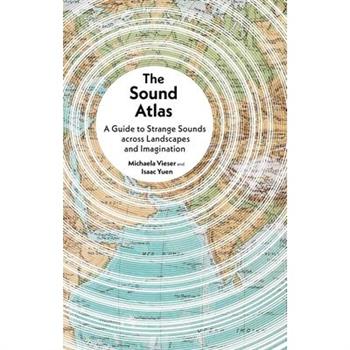












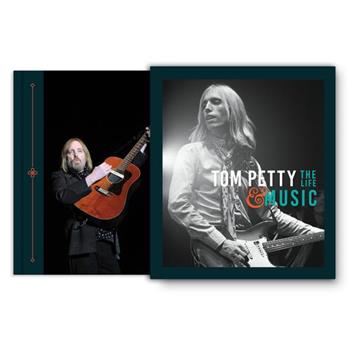
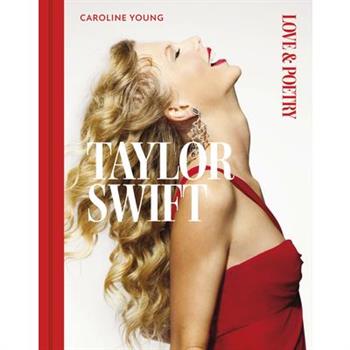
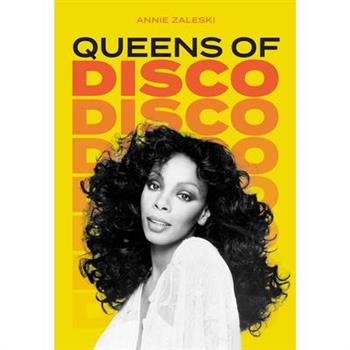


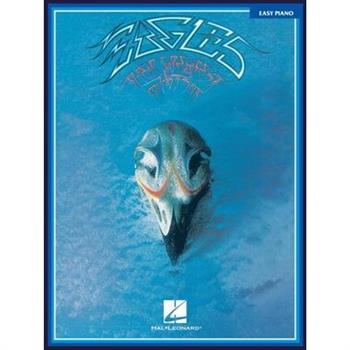




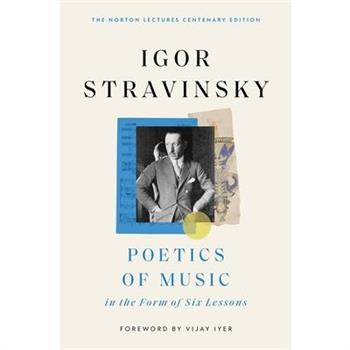








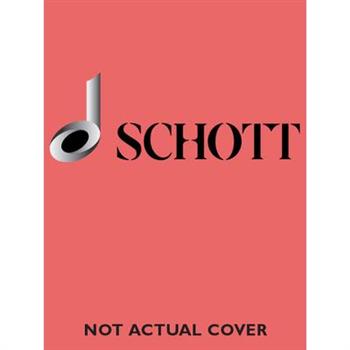
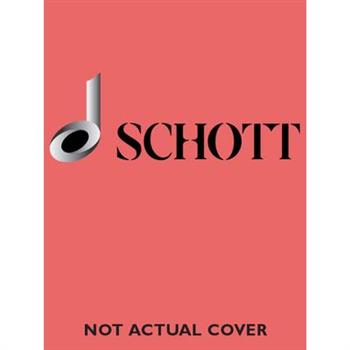
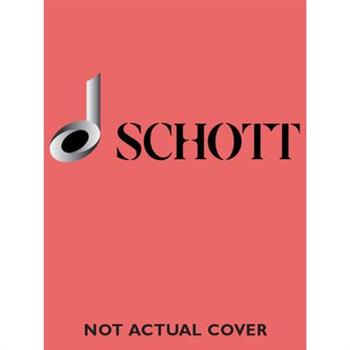
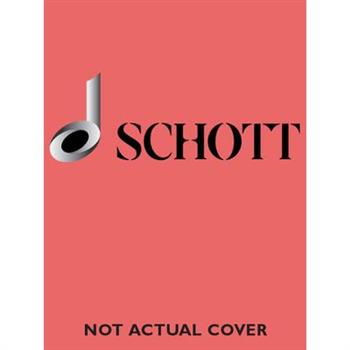
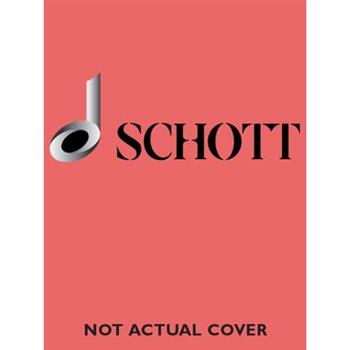
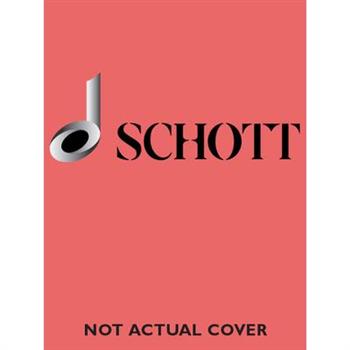
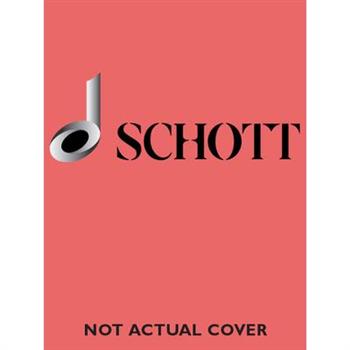



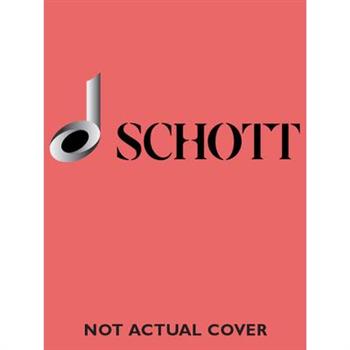
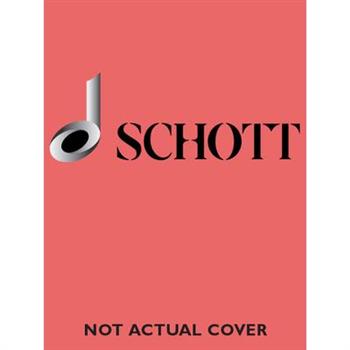
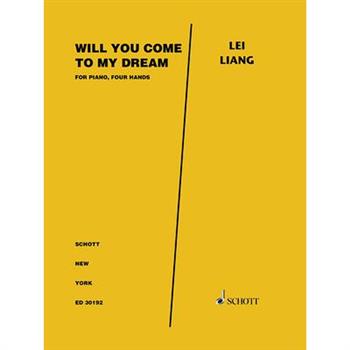

![Vocalises in the Modern Style [Vocalizzi Nello Stile Moderno] Vocalises in the Modern Style [Vocalizzi Nello Stile Moderno]](https://cdn.kingstone.com.tw/english/images/product/8189/9781495058189m.jpg?Q=b0d40)

